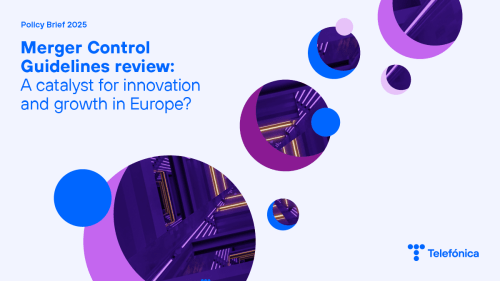Telefónica has joined the “Climate Transition Planning Guidance for Telecommunication Companies” from GSMA, a global association representing 1,000 mobile operators and related companies, and has pledged to align its Climate Transition Plan with the new guide. Telefónica together with Virgin Media O2 are among the first 12 operators to adopt this commitment.
The GSMA points out that telecommunications is a critical infrastructure on which the global economy depends. According to the World Economic Forum, companies that fail to adapt climate risks could lose up to 7% of their annual earnings by 2035. However, companies that invest in adaptation, resilience and decarbonisation are seeing tangible returns — up to $19 in value for every dollar spent.
Climate transition planning is the process by which companies define the solutions to align their entire organisation with the climate goals in a demonstrable and auditable way. Key elements include governance, a holistic and forward-looking approach integrated into business and financial planning, and a clear roadmap for implementation.
This guidance is designed primarily for mobile and fixed network operators, but it also serves as a useful reference for the broader telecoms supply chain and for investors. It is aligned with related reporting requirements under the European Sustainability Reporting Standards (EU Directive on Corporate Sustainability Reporting or CSRD), IFRS S2, CDP and the Science Based Targets Initiative (SBTi).
Telefónica is an active member of the GSMA’s Climate Action Working Group, which brings together 77 operators from more than 150 countries and territories, representing 80% of the world’s mobile connections. In this document, developed with the Carbon Trust and the International Telecommunication Union (ITU), the association extends its gratitude to the Spanish operator for its contributions to its development.
COP30, a turning point
This year’s Climate Summit (COP30) aims to shift the focus from promises to action, setting out roadmaps to finance the transition, reduce fossil fuels and scale up clean energy. In this context, Telefónica underscored the role of telecommunications as a pillar of resilience, highlighting technologies such as 5G, IoT and drones to ensure secure communications and accelerate emergency response efforts during climate events.
Telefónica also reinforced its commitment to Green Digital Action (GDA), an initiative led by the ITU, a United Nations agency, with its support for the new GDA Hub, which will provide tools, knowledge and data to help countries expand green technologies, reduce the environmental footprint of technology and ensure access to sustainable digital solutions for all.
Climate Action Plan
Since 2022, Telefónica has had a Climate Action Plan that sets out its objectives and actions to achieve net-zero emissions and strengthen the company’s resilience. It also details Telefónica’s contribution to emissions reductions in other sectors through connectivity and digitalisation solutions.
The Plan includes performance indicators and defines oversight and accountability responsibilities across the Company.
Telefónica’s ambition has driven a strong focus on reducing its own CO2 emissions and those across its value chain, achieving 52% reduction over the last decade. The Company has established energy and climate targets for 2030 and 2040, supported by concrete goals for energy efficiency and renewable electricity consumption (already at 100% in its main markets). In addition, the group has embedded circularity criteria into its business model, helping reduce resource depletion risks, strengthen supply chain resilience and support further GHG emissions.









